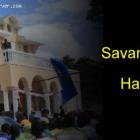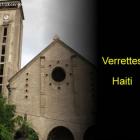ADVERTISEMENT
Cathedral Cap-Haitian - Haiti Observer Blog
Cathedral Cap-Haitian, Haiti Observer Blog. Read the following articles about Cathedral Cap-Haitian
Cap-Haitian Cathedral Symbol of Catholicism in Haiti
Visitors to Cap-Haitian Cathedral in the town of the same name will discover the history of Haiti, before it became the first black-led republic in the world. Located on the main plaza, the church, now known as the Cathedral of Our Lady, is a well-maintained edifice that seems displaced in the garbage-strewn and dirty rest of town.
A piece of Haiti's slave history is remembered with the statue of revolutionary slave leader, Mackandal, situated on the cathedral site. He led a contingent of black slaves that had fled plantations, where they had labored cutting down sugar cane. The slaves fighting under Mackandal were called Maroons, a reference to the blood they shed while hewing sugar cane. Mackandal was killed on the plaza in 1758, 46 years before Haiti won its freedom from the French.
The city of Cap-Haitian and its long History
Columbus' Santa Maria ran into a coral reef in 1492 and still, supposedly, lays there today, as much a ruin as the once-great city that was Cap Haitian.
The Spanish crew ultimately decided to settle in Santo Domingo in what is now the Dominican Republic, leaving Cap Haitian to the pirates who would influence its first name, Cabo Francés. The French revolution would inspire one in Haiti as well, as the 'freedom and liberty' so valiantly touted by the French masters about the French in France told of an unbearable hypocrisy to the African-descended slaves in Haiti. A 13 year war began and ended near Cabo Francés, with the resulting independence of the enslaved and the country of Haiti. Proudly, they renamed the cape Cap-Haitien after naming their country Haiti, considering it, the site of the most important struggles, the birthplace of their independence.
Our objective is to share with you news and information about Haiti and the people of Haiti. Traditions, habits and the way we were or grew are alive in this site. We highly recommend that you Subscribe to our Newsletter and also share with us some of the things that are memorable and made us unique people.

 The Town of Savanette, Haiti
The Town of Savanette, Haiti  Newsletter
Newsletter  Informative Marketing and Advertising in the Haitian Community
Informative Marketing and Advertising in the Haitian Community  Thomonde, Haiti
Thomonde, Haiti  Verrettes, Haiti
Verrettes, Haiti